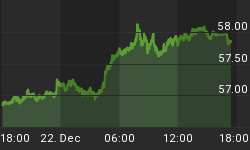Perhaps only very long-term readers of my articles are aware of the fact that I have maintained a bullish, and sometimes a very bullish, stance with regard to stock funds since mid-2009. I do not change my recommended allocations a whole lot very often and when I do, the changes are almost always gradual.
But after nearly 4 1/2 years of being quite bullish, I am now looking at data that suggest I should view things somewhat differently. I have already alluded to the reasons for this in my Sept. and Oct. Newsletters. Readers who are new to my articles can go to these links for detailed explanations.
Note: The 3 asset allocation tables shown for moderate, aggressive, and conservative investors in my Sept. 16, 2013 Safehaven article were incorrectly stated as for the period beginning Oct. 1. (They were valid only thru Sept. 30, with the new tables accessible at my web site.) The remaining table shown, which presented specific fund recommendations, is correct.
Since I wrote these articles 4 to 6 weeks ago, the overall stock market has become even more overvalued, in my opinion. In fact, every category of domestic stock fund, from Large Growth through Small Value, and about half of all sector fund categories appear highly susceptible to a reversal of fortunes in the period ahead. International funds too are overvalued although funds mainly invested in Europe and Japan are less so. (See complete list of overvalued funds below)
Although I can't state with any preciseness when such reversals of strong, positive results over the last 5 years will happen, my research suggests that it is likely to happen sometime within the next 12 months, and probably more likely to be sooner than later.
Therefore, in accordance with the suggestions I made in the Sept. and Oct. articles, I am issuing an "Alert." (Our last Alert was made on July 20th 2011 and recommended that investors BUY almost all categories of stock funds; investors who acted on this Alert would have enjoyed the huge run-up in most stock fund prices since then.)
The current Alert is not intended to urge investors to throw caution to the wind and dump most or all of their stock funds. Rather, it's more of a "heads up" to caution investors that stocks cannot continue rising at their current pace indefinitely. Of course, it would be great if I am wrong in that no one would have to suffer from a period of extended mediocre or even zero or negative returns. But my research suggests that now might be the time to move some of your invested allocation to stocks elsewhere, perhaps to cash or into bonds (except High Yield Bonds, and only if you are drastically under-allocated to bonds as compared to my Oct. recommendations.)
My recommended allocations remain as presented in the Oct. Newsletter, which again suggests this is not a recommendation for a wholesale exiting from stocks. Rather, it suggests that investors consider reducing their allocations to the levels shown in the October Model Portfolios, if they haven't done so already. In fact, the 55% allocation to stocks for Moderate Risk investors recommended there (but much less for Conservative Risk Investors) still is hardly bearish. And investors too should remember that this Alert suggests that there will likely be much better buying opportunities down the road.
I have come to realize that successful management of one's investments is never going to entail being able to get the absolute best results by acting in accordance with somebody's (or your own) prescriptions. Rather, successful management is merely a matter of degree in reaching a more realistic objective as judged by your eventual answer to the following question: Were some of your actions helpful and enable you to either avoid losses or, on the other hand, achieve better gains than you otherwise would have? Here, then, are the details of the Alert:
REDUCE (or SELL) Investments from the Following Fund Categories:
Large Growth
Large Blend
Large Value
Mid-Cap Growth
Mid-Cap Blend
Mid-Cap Value
Small Growth
Small Blend
Small Value
International (with the exception of funds primarily invested in Europe and/or Japan)
Consumer Cyclical
Health
Technology
Communications
Consumer Defensive
Utilities
The Following Bond Fund Category Is Also Overvalued:
High Yield Bonds















